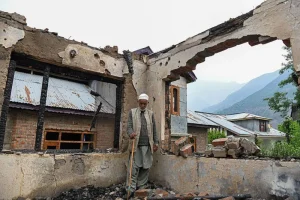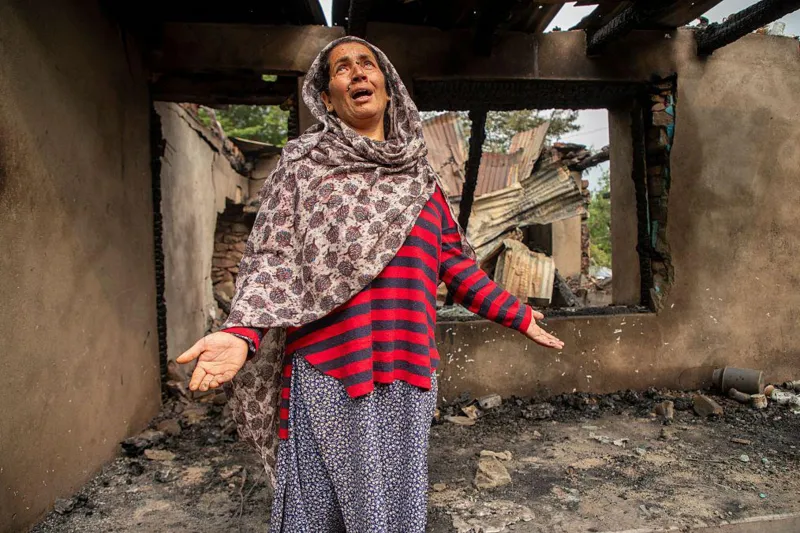To live along the Line of Control (LoC) – the volatile de facto border that separates India and Pakistan – is to exist perpetually on the razor’s edge between fragile peace and open conflict, reports BBC from Kashmir.
The recent escalation after the Pahamgam attack brought India and Pakistan to the brink once again. Shells rained down on both sides of the LoC, turning homes to rubble and lives into statistics. At least 16 people were reportedly killed on the Indian side, while Pakistan claims 40 civilian deaths, though it remains unclear how many were directly caused by the shelling.
“Families on the LoC are subjected to Indian and Pakistani whims and face the brunt of heated tensions,” Anam Zakaria, a Pakistani writer based in Canada, told the BBC.
“Each time firing resumes many are thrust into bunkers, livestock and livelihood is lost, infrastructure – homes, hospitals, schools – is damaged. The vulnerability and volatility experienced has grave repercussions for their everyday lived reality,” Ms Zakaria, author of a book on Pakistan-administered Kashmir, said.
India and Pakistan share a 3,323km (2,064-mile) border, including the 740km-long LoC; and the International Border (IB), spanning roughly 2,400km. The LoC began as the Ceasefire Line in 1949 after the first India-Pakistan war, and was renamed under the 1972 Simla Agreement.

The LoC cutting through Kashmir – claimed in full and administered in parts by both India and Pakistan – remains one of the most militarised borders in the world. Conflict is never far behind and ceasefires are only as durable as the next provocation.
Ceasefire violations here can range from “low-level firing to major land grabbing to surgical strikes”, says Happymon Jacob, a foreign policy expert at Delhi’s Jawaharlal Nehru University (JNU). (A land grab could involve seizing key positions such as hilltops, outposts, or buffer zones by force.)
The LoC, many experts say, is a classic example of a “border drawn in blood, forged through conflict”. It is also a line, as Ms Zakaria says, “carved by India and Pakistan, and militarised and weaponised, without taking Kashmiris into account”.
Such wartime borders aren’t unique to South Asia. Sumantra Bose, a professor of international and comparative politics at the London School of Economics, says the most well-known is the ‘Green Line” – the ceasefire line of 1949 – which is the generally recognised boundary between Israel and the West Bank.
Not surprisingly, the tentative calm along the LoC that had endured since the 2021 ceasefire agreement between the two nuclear-armed neighbours crumbled easily after the latest hostilities.
“The current escalation on the LoC and International Border (IB) is significant as it follows a four-year period of relative peace on the border,” Surya Valliappan Krishna of Carnegie India told the BBC. Violence along the India-Pakistan border is not new – prior to the 2003 ceasefire, India reported 4,134 violations in 2001 and 5,767 in 2002.
The 2003 ceasefire initially held, with negligible violations from 2004 to 2007, but tensions resurfaced in 2008 and escalated sharply by 2013. Between 2013 and early 2021, the LoC and the IB witnessed sustained high levels of conflict. A renewed ceasefire in February 2021 led to an immediate and sustained drop in violations through to March 2025.
“During periods of intense cross-border firing we’ve seen border populations in the many thousands be displaced for months on end,” says Mr Krishna. Between late September and early December 2016, more than 27,000 people were displaced from border areas due to ceasefire violations and cross-border firing.


